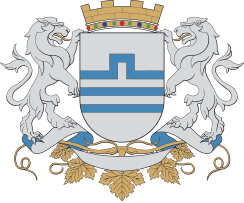Natural Features
The large number of underground water flows makes this area well known for its healthy drinking water. The Rivers Morača and Ribnica, which cross the city in the directions north–south and east–west respectively, represent a special value and a beauty of nature.
Limestone river beds, rock ledges, caves, and unique canyons, through which clean and clear rivers flow, with plenty of beaches, rapids, bends, and vortices remain long in the visitor’s memory. Podgorica is also surrounded by lush vineyards called Ćemovsko, Lješansko, and Doljansko.
Podgorica is situated on the largest flat area of land in Montenegro, part of the spacious Shkodra–Podgorica Valley. It gently slopes towards the south and south-west. The southern part of the Zeta Valley, called the Lower Zeta (Donja Zeta) continues towards Lake Skadar as a wetland. This is an extremely fertile part of the plain with sedimented particles that form a thick layer of arable land, suitable for vegetable crops, such as bell peppers and tomatoes, as well as vineyards and fruit orchards – especially peaches, figs, and kiwis.
The spacious Ćemovsko Field is located in the central part of the Zeta Plain in the triangle made between the Rivers Cijevna, Ribnica, and Morača, and is made of layers of gravel and sand, set with a carbonate matrix. In this field, a thicker layer of arable land has never been formed. With special agricultural technology hundreds of acres have been reclaimed and transformed into vineyards with high-quality yields and with the subsequent production of quality wines and spirits. To the west, Podgorica opens out towards the Bjelopavlići Plain through which River Zeta meanders, and which is climatically and pedologically extremely favourable for farming and fruit growing.
The city itself is known for its spacious and nicely arranged green surface and parks. In some of them pine trees dominate and in others there are more deciduous trees, such as linden, oak, and plane trees. In the recent period boulevards have spread through Podgorica and they are lined with attractive palm trees. Along the main city roads there is bushy vegetation, such as boxwood.
The Zeta Plain on which the city is situated is a unique area with 30,000 acres of arable land and it extends from Glava Zete to the shores of Lake Skadar.
The River Morača is relatively rich in fish, which is confirmed by the common sight of anglers on the banks of the river, even within the city itself. A visitor of the city who is interested may inquire at the Sports Fishing Club of Podgorica for the necessary permits and valuable advice offered by lovers of this sport, regarding places to fish, equipment, and – what is most important – friendship.
The rivers are therefore sources of life. The Rivers Morača, Ribnica, Zeta, Sitnica, Mareza, and Cijevna have determined the city’s borders for ages, but also the large number of subterranean waters make this area rich in healthy drinking water. The limestone river beds and extraordinary relief sculptured by Podgorica’s waters, apart from the practical aspect, give Podgorica an ecological aesthetic appearance.
Podgorica is made up of areas characterised by their geography. In the areas of Kuči and Piperi, agricultural production and cattle-breeding dominate over fruit growing, while mountain potatoes thrive extremely well in this area. Here, fishponds can be found in which excellent trout is bred.











